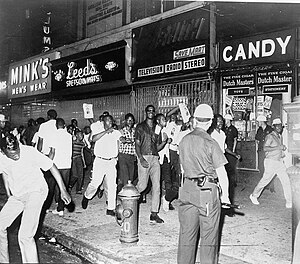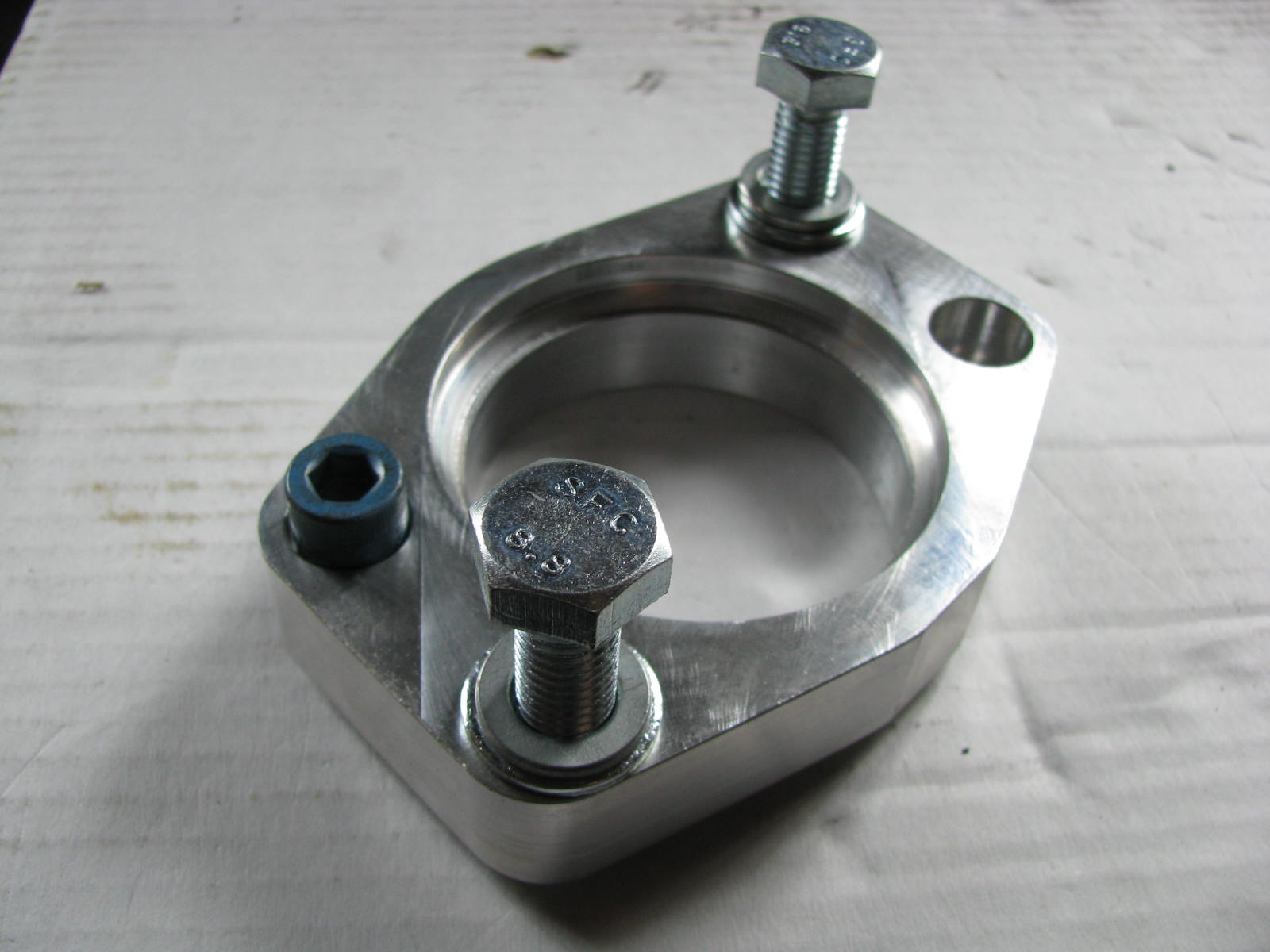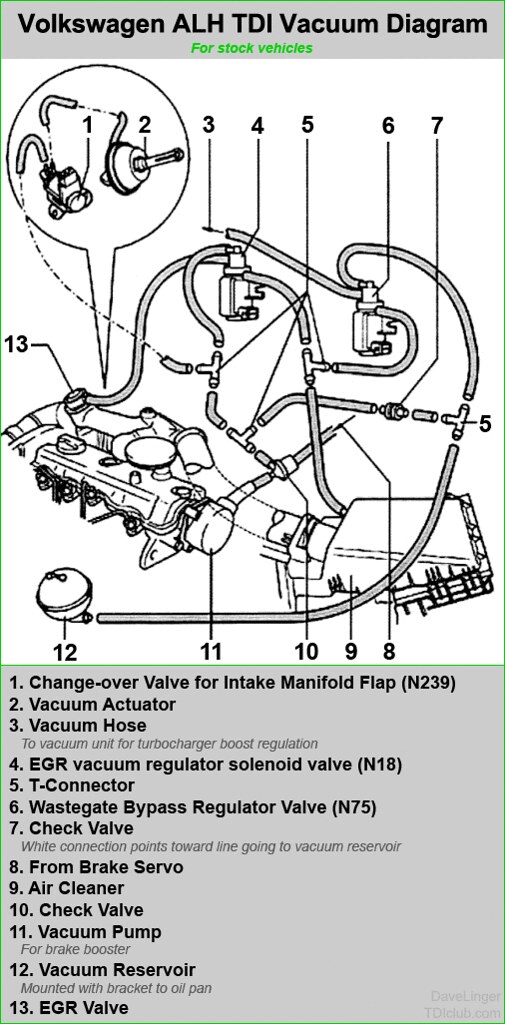For those who have read this blog over the years, you will recall that I intended to put together posts about how I did the install of a TDI engine into the air-cooled bus. Now, 8+ years later, just about all of the quirks have been solved. So, I think I can actually start producing those posts.
TDI
So, you want to put a turbo-diesel into your bus. I think that's a great idea... so much so, that I did it. I enjoy 30+ miles-per-gallon, power to spare and I could burn 100% domestically created bio-diesel. So, whether you're looking for more power, better mileage, safety in case of an accident or for political / environmental reasons, putting a TDI into your bus is a super idea that will deliver on those goals. Before you break out your angle grinder and sell your old engine, you need to plan a little bit.
Cost and Payback Realities
First, some sobriety. This post contains the lion's share of the costs. They are big and almost all of them are up-front. $3500 for the engine, another $2100 for the transaxle, $400 for the adapter plate and clutch/pressure plate, and another few hundred for other bits. For most of us, this represents a significant outlay (lets say $7kUS). For some perspective, I ran some calculations in a spreadsheet. If we assume that the old engine got 14mpg and the new one gets 32mpg, how many miles would it take for this job to pay for itself? Gas prices are always moving around and when I started this project they were higher than they are now, but let's assume they are $3.30US for a US gallon. B20 has been steady at $2.99US per US gallon for a few years. So, when we smash all that together it will take 50k miles before this job pays for itself. That's a lot of festivals. When I first ran my justification, I was still making a car payment. So, I factored selling off that car into my logic, and that brought the payback down to about 20k miles, which I have not yet passed, so I guess I am still paying this project off. I liek to think that this project keeps me out of the bars, so I guess I could factor that in too. Your project; your choices.
Guideposts
When I did this conversion there were examples of Vanagon's getting swapped out, but there were no examples of an air-cooled type2 microbus getting a TDI. As a result, I did this with advice and wrenching from some online Vanagon converts and local friends, but without the benefit of someone else completing the job. I do NOT believe mine is the only operating example anymore. I'm not arrogant enough to believe that my efforts in any way influenced those other projects. This is just how I did it. Your mileage, as they say, will vary. I encourage you to look at the
TDIClub, and
TheSamba. Those were my 2 most fruitful forums. While they have their own personalities, they are both significantly rich in content.
Sourcing
 |
| ALH TDI on a home-made scoot |
Still up for it? Okay! The first step in your planning is the acquisition of your new engine and the Bentley shop manual that corresponds to it. I went with an early-model ALH out of a 1998 VW Beetle. Any of the early ALH years would work, though the accelerator pedal on anything after the 1998 New Beetle is better than the 1998. Once you get past 2000, though, you will start encountering the interlock/immobilizer. This can be routed around with a Malone tune (See
here). Depending on your goals, you may have intended on a tune anyway. I have definitely thought about it and now that the system operates as intended, I may treat Hapy to a tune one of these days. Once you get into more recent years (after 2004), the ability to use bio-diesel may become constrained. I have heard that the Pumpe Duse (PD) models are less tolerant of fuel anomalies, making B100 not-recommended for those engines. I could be mistaken, so I encourage you do your own research if you are going to use a Pumpe Duse or later model. When I did this, a 1998 engine was less than 10 years old and the PD was the "new fangled" one.
FastForward used to have a donor parts list on their website, but they don't anymore. So here is a list of things that I know I needed from the donor car. You need the...
- fully dressed, as in all parts attached, engine with the overflow bottle (tho replacements are not too expensive) and all of the hoses, belts, etc
- complete vacuum system, with the valves,vacuum lines and vacuum ball
- fuel filter and fuel filter mount
- passenger-side engine mount (I didn't need the dogbone mount, but you might)
- dashpod and complete accelerator pedal with rheostat (cut off the pigtail leaving yourself a few inches of wire, you'll need that to wire it back up later. label well, it might be a while before you put this back together again)
- in-car fuse-box and battery-top fuse-box
- computer with both plugs. The smaller plug (which goes to engine management) is best uncut. The larger plug can be cut, but you must be very careful where. Any accidentally cut wire (like to the dashpod, eg) will create headaches and repairs later
- starter. grab the pigtail that's plugged into it too
- intercooler and all related pipes
There are pieces you can choose to include on top of this list. For example, if you are going to try to do cruise control, you will need the control arm from the cockpit, the speed sensor from the wheel and the brake sensor from the brake pedal. If you intend to use the dashpod for all gauges, you will need the speed sensor regardless. And, eventually, you will need to plan out how to get the right resistance range from your fuel level sender. I didn't do this, but I have thought about it. Do you want to try to get air conditioning running? I didn't but, if you do, you'll need that complete system (compressor/pump, hoses, the condenser on the radiator, etc) too.
I found a donor with a little over 50k miles on it with all of those accessories plus some stuff I didn't need, shipped from GA for around $3500. The price has probably come way down, but the miles have probably gone way up. You may need to rebuild or replace some expensive systems (turbo, head) so plan accordingly. If your donor engine is coming from a wrecked car, you will probably need a $80US Van Gogh bracket (available from
DieselGeek) since most of the time this point in the engine block is weakened or broken in a front-end collision. You will need a $70US starter adapter so the TDI starter can fit into your bellhousing. You can find them
here. I suggest getting the OEM plug unless it is in the bundle of wires from your donor as I suggested above.
Engine Preparation
Once you have the engine on hand, I strongly suggest you go through it. If you aren't an expert, employ one. I had my friend Justin, the local TDI guru, go through it and then he did a timing belt job on it. By go through it, I mean really go through it. Pull the turbo and check for play. Pull a valve looking for burn marks. Shine a light into a cylinder (or all). Pull the oil pan looking for metal bits. Unless you knew the engine before you got it. Hours spent now will save days (and possibly an engine replacement) later.
I removed the exhaust gas re-circulation (EGR) stuff, and installed a "race" pipe. These currently run for around $150US, though I'm pretty sure I paid much less than that. You can find them
here. Making changes like this are easier when the engine is on the ground versus in the bus. Depending upon your application, and emission needs, you may not be able to meet your target without the EGR. I know that with B20 my bus produces far less pollution than it did with the old engine, but threads like
this one have me considering putting it back in. Since this uses coolant to reduce the temperature of the exhaust gasses re-entering your engine (or uses exhaust to heat your coolant, depending on your perspective), this could be an issue if you are concerned about keeping the engine/coolant temperatures down. Your experience may vary; the only wrong choice is the uninformed one.
At this point, I would encourage contacting
Kennedy Engineering (KEP) for an adapter plate and stage 1 clutch. When I bought them, the conversion kit (included flywheel) was $400US. It could very well have doubled by now, but the Van Gogh and starter adapter are about what I paid, so who knows? I am unable to see prices on the KEP website. If you are going to go big, with new nozzles and a bigger turbo, you may want to step up to the stage 2 clutch. The clutch will be heavier than the gasser clutch regardless, so consider your left leg and the stress on your clutch cable when you choose. I have no regrets with my selection (Stage 1).
Transaxle
When I first did my conversion, I didn't have any extra scratch around to think about the transaxle. I used the stock one. The gearing, especially at higher desired speeds, is way off. After I had the bus moving for a couple of years, and finacially recovered a little bit from my divorce, I had a transaxle built by AA Transaxle in Seattle. Darryl built me a trasnaxle based on the "CM" code from a 1975 bus with a taller 4.86 ring/pinion (like the Vanagon’s have) that is good for the Diesels with taller 3rd and 4ths. Into that case, we installed 1.14 and .73 gears for 3rd and 4th respectively. At the time, the prices were $500US for the core plus $320US per gear set plus $895US for the full rebuild for a total of around $2100 including shipping.
Bus Preparation
 |
| hatch. note notch cut out of support |
With a known-viable engine on your shop floor (or sitting on a cart / tire / stand / scoot / whatever), you're ready to go after the recipient. Remove the old engine and transmission as a unit. This is documented in the Bentley and the Idiot's Guide in far better detail than I could provide. I recall the significance of draining the gasoline out of the tank when I hit this point, knowing that it was the last time gasoline would be in there. You may have a similar moment of realization. Whatever your motivation, this is a special moment. Separate the engine and transmission. Remove the battery and the starter. These will join the engine in the will-sell-later pile. You won't need the voltage regulator, so that can also go into that pile. But, you will want to keep track of (read: label well) the wire that feeds power to the reverse switch as well as the power source that leads to the front of the bus from the starter. I suggest leaving the starter trigger wire with the plug on it so you can easily identify it later. Or, cut it off and label the remaining wire well.
With the engine and transmission set aside, remove the fuel tank (See
Pulling the Fuel Tank). If you retain the stock TDI location for the vacuum pump and don't modify the outlet flange (I recommend both after pursuing alternative solutions), you will need to modify the fuel tank (See
Fuel Tank Solved). Since you are shifting from gasoline to diesel, you will at the very least want to have your tank cleaned and lined. You may not have a firewall anymore, so you may want to consider cleaning and painting the fuel tank bay and putting some paint on the tank itself.
When I did this conversion, I cut a large access hatch from above the engine bay. You don't have to do that, but I think you'll find maintaining the engine, even checking the oil and coolant levels far easier. Whether you do or don't, you will need to cut out a short section (less than a foot) of the support that runs across the underside of that back deck. Otherwise, the intake manifold will hit it once you have the engine installed. You can see the section cut out in the picture above. I intended to stiffen it, but never got to it. I have loaded tons of stuff onto the back deck and have never stressed this "lid" to the point where I thought about it. Your bus; your choice.
TDI meet Transaxle
 |
| adapter on with studs still in |
Once the TDI has the flywheel off, the adapter can be attached and the transmission connected. The adapter can only go on one way, and it goes on first. Then, the pilot bearing goes into the flywheel and it is attached to the block. Add the pressure plate and clutch. Remove all of the pins and studs from the adapter plate. Now, mate the transmission, twisting it so the output shaft slides in and then rotate the transmission to align to the holes. Then, set the pins and studs through. I tried lots of other ways, but this was the only consistent way, and I have done this multiple times. This way takes a few minutes. Leave the studs in, and you'll be at it all day.
I'll stop here for today.
Next, I'll go through the various systems and how they were solved. As the posts are produced and released, I'll return to this post and hyper-link them below, and cross-reference as best I can.
Fuel System
Physical Mounting
Vacuum System
Air, Inter-cooler and Exhaust
Primary Electrical
Cooling
Secondary Electrical
ECU, dashpod and Sensors




























